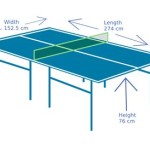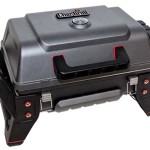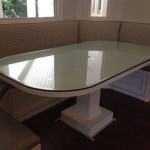DIY Retractable Fly Screens For Bifold Doors
Bifold doors, characterized by their folding panels, offer expansive views and seamless transitions between indoor and outdoor spaces. However, like any large opening, they can become a significant entry point for insects, particularly during warmer months. Traditional hinged or sliding screen doors can be cumbersome and detract from the aesthetic appeal of bifold doors. A retractable fly screen offers a more discreet and practical solution. While professional installation is an option, a do-it-yourself approach can be a cost-effective and rewarding alternative for homeowners with some carpentry and mechanical skills.
This article provides a comprehensive guide to constructing and installing retractable fly screens for bifold doors, outlining the necessary materials, tools, and steps involved in the process. It will also delve into considerations for choosing the right type of retractable screen mechanism and mesh, as well as troubleshooting common challenges that may arise during installation.
Understanding Retractable Fly Screen Systems
Retractable fly screens, also known as disappearing screens, function by rolling the mesh screen into a protective housing when not in use. This housing, typically made of aluminum, is mounted to the door frame, concealing the rolled-up screen and mechanical components. The screen is deployed by pulling it across the opening and securing it to the opposite side. A spring-loaded mechanism allows the screen to retract smoothly and evenly back into the housing when released. There are several different types of retractable screen systems, each with its own advantages and disadvantages.
Horizontal Retractable Screens: These screens are designed to retract horizontally, making them suitable for wide openings like those created by bifold doors. They consist of a screen housing mounted on one side of the opening and a track system along the top and bottom of the frame. The screen is pulled across the opening and secured to a latch or magnetic strip on the opposite side. Horizontal systems are generally easier to install and operate, and they are available in single or double configurations, allowing for wider coverage. Double systems use a screen housing on each side of the opening and meet in the middle.
Vertical Retractable Screens: While less common for bifold doors due to their typically wide and low configuration, vertical retractable screens can be used in certain situations. They retract upwards into a housing mounted at the top of the door frame. Vertical systems are often used for windows or smaller doorways. For bifold doors, they would require careful consideration of the door height and available headroom.
The choice between horizontal and vertical systems depends largely on the specific dimensions of the bifold door opening and the aesthetic preferences of the homeowner. For most bifold door applications, horizontal retractable screens are the preferred and more practical option.
Material and Tool Considerations
Successful construction and installation of retractable fly screens require careful selection of materials and appropriate tools. The quality of the materials directly affects the durability and longevity of the screen system, while the right tools ensure accurate cuts, secure fastenings, and a professional-looking finish.
Screen Mesh: The mesh is the most crucial component of the fly screen, responsible for keeping insects out while allowing airflow and visibility. Common materials include fiberglass, polyester, and aluminum. Fiberglass mesh is the most affordable option and offers good durability and insect protection. Polyester mesh is stronger and more resistant to tearing, making it a good choice for high-traffic areas. Aluminum mesh is the most durable option and offers superior insect protection, but it is also the most expensive. Choose a mesh with a tight weave to effectively block even small insects.
Screen Housing and Tracks: The housing and tracks are typically made of aluminum, which is lightweight, durable, and resistant to corrosion. Choose a high-quality aluminum extrusion with a powder-coated finish for added protection and aesthetic appeal. The housing should be large enough to accommodate the rolled-up screen and the retraction mechanism without overcrowding. The tracks should be smooth and straight to ensure the screen glides easily. Pay attention to the profile of the tracks and ensure they are compatible with the screen housing and the bifold door frame.
Fasteners and Hardware: Use stainless steel screws and other hardware to prevent rust and corrosion, especially in coastal or humid environments. Choose screws of the appropriate length and gauge for securely fastening the screen housing and tracks to the door frame. Consider using self-tapping screws for easier installation. Make sure the latching mechanism, whether magnetic or mechanical, is robust and reliable.
Tools: The following tools are essential for DIY retractable fly screen installation:
- Measuring tape
- Level
- Miter saw or hand saw with miter box
- Drill with various drill bits
- Screwdriver set (Phillips and flathead)
- Caulking gun with exterior-grade sealant
- Safety glasses
- Work gloves
Optional tools that can be helpful include a stud finder, countersink bit, and a power screwdriver.
Step-by-Step Installation Guide
The installation process for retractable fly screens involves precise measurements, careful cutting, and secure fastening. Following these steps accurately will ensure a properly functioning and aesthetically pleasing fly screen system.
Step 1: Measure the Bifold Door Opening: Accurately measure the width and height of the bifold door opening. Take multiple measurements at different points to account for any variations in the frame. Subtract the necessary clearance for the screen housing and tracks from these measurements. Refer to the manufacturer's instructions for specific clearance requirements. Precision is key for proper screen operation.
Step 2: Cut the Screen Housing and Tracks: Using the measurements obtained in Step 1, cut the screen housing and tracks to the appropriate lengths using a miter saw or hand saw. Ensure the cuts are clean and square. If using a hand saw, use a miter box to achieve accurate angles. Deburr any sharp edges to prevent injury.
Step 3: Assemble the Screen Housing: If the screen housing requires assembly, follow the manufacturer's instructions carefully. This may involve attaching end caps, installing the retraction mechanism, and threading the screen mesh onto the roller. Ensure all components are securely fastened.
Step 4: Mount the Screen Housing: Position the screen housing against the door frame, ensuring it is level and plumb. Use a level to verify the alignment. Mark the screw locations on the frame using a pencil. Pre-drill pilot holes at the marked locations. Apply a bead of exterior-grade sealant to the back of the screen housing where it will come into contact with the frame. Securely fasten the screen housing to the frame using stainless steel screws.
Step 5: Install the Tracks: Position the tracks along the top and bottom of the door frame, ensuring they are aligned with the screen housing. Use a level to verify the alignment. Mark the screw locations on the frame using a pencil. Pre-drill pilot holes at the marked locations. Apply a bead of exterior-grade sealant to the back of the tracks where they will come into contact with the frame. Securely fasten the tracks to the frame using stainless steel screws. Ensure the tracks are parallel and provide a smooth surface for the screen to glide along.
Step 6: Test the Screen Operation: Carefully pull the screen across the opening and secure it to the latch or magnetic strip on the opposite side. Verify that the screen glides smoothly and retracts fully into the housing. Adjust the tension of the retraction mechanism if necessary, following the manufacturer's instructions. Ensure the screen latches securely and remains taut when deployed.
Step 7: Seal Gaps and Adjustments: Inspect the installation for any gaps between the screen housing, tracks, and the door frame. Seal any gaps with exterior-grade sealant to prevent insects from entering. Make any necessary adjustments to the track alignment or latching mechanism to ensure smooth and secure screen operation.
Step 8: Final Inspection: Conduct a final inspection of the entire installation. Ensure all screws are securely fastened, the screen operates smoothly, and there are no gaps or openings that could allow insects to enter. Clean any debris from the installation area.
Troubleshooting Common Issues
Despite careful planning and execution, some challenges may arise during the installation of retractable fly screens. Addressing these issues promptly and effectively will ensure a successful outcome.
Screen Not Gliding Smoothly: If the screen is not gliding smoothly, check for obstructions in the tracks. Remove any debris or foreign objects that may be hindering the movement. Lubricate the tracks with a silicone-based lubricant. Ensure the tracks are properly aligned and parallel. If the problem persists, the retraction mechanism may need adjustment or replacement.
Screen Not Retracting Fully: If the screen is not retracting fully into the housing, the tension of the retraction mechanism may be too low. Adjust the tension according to the manufacturer's instructions. Ensure the screen mesh is not binding or catching on any internal components. If the problem persists, the retraction mechanism may be damaged and require replacement.
Gaps Between Screen and Frame: Gaps between the screen and the frame can allow insects to enter. Carefully inspect the installation for any gaps and seal them with exterior-grade sealant. Ensure the screen housing and tracks are properly aligned and securely fastened to the frame. If necessary, add weather stripping to further seal the gaps.
Screen Mesh Tearing: Screen mesh can tear due to wear and tear or accidental damage. Repair small tears with a screen repair kit. For larger tears, replace the entire screen mesh. When replacing the mesh, follow the manufacturer's instructions carefully to ensure proper tension and alignment.
Latch Not Engaging: If the latch is not engaging properly, adjust its position to ensure it aligns with the receiving mechanism. Tighten any loose screws or fasteners. If the latch is damaged, replace it with a new one. Consider using a magnetic latch for a more reliable and secure connection.

Diy Retractable Fly Screens Free

Retractable Fly Screens For Bifold Doors

Diy Retractable Fly Screen Magnetic Insect Mesh Roller Bug Netting For Doors

Fly Screens For Bi Fold And Sliding Doors Exclusive Pet Windows

Flyscreens Clearline Windows Ltd

Fly Screens For Bi Fold And Sliding Doors Exclusive Pet Windows

Retractable Fly Screen For Bifold Door

Diy Retractable Fly Screens For French Doors Fits Up To 1400mmw 2100mmh Door

Southern Star Windows

To Diy Or Not Is It Worth Installing Your Own Insect Screens Artilux








